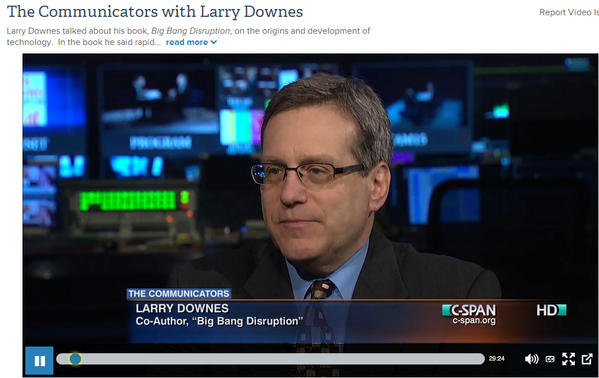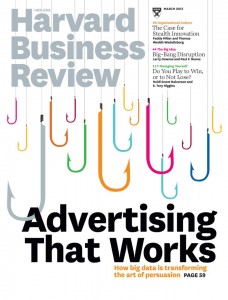Over on Forbes today, I have a very long post inspired by Monday’s oral arguments in Verizon’s challenge of the FCC’s Open Internet rules, passed in 2010
I say “inspired” because the post has nothing to say about the oral arguments which, in any case, I did not attend. Mainstream journalists can’t resist the temptation to try to read into the questions asked or the mood of the judges some indication of how the decision will come out
But as anyone who has ever worked in a court or followed appellate practice well knows, the tone of oral arguments signals nothing about a judge’s point-of-view. Often, the harshest questioning is reserved for the side a judge is leaning towards supporting, perhaps because the briefs filed were inadequate. Bad briefs create more work for the judge and her clerks.
I use the occasion of the hearing to take a fresh look at the net neutrality “debate,” which has been on-going since at least 2005, when I first started paying attention to it. In particular, I try to disentangle the political term “net neutrality” (undefined and, indeed, not even used in the 2010 Open Internet order) from the engineering principles of packet routing.
According to advocates for government regulation of broadband access, the political argument for net neutrality regulation is simply a codification of the Internet’s design. But regardless of whether it would even make sense to transform the FCC into the governing body of engineering protocols for the network (the Internet Society and the its engineering task forces are and always have been doing a fine job, thanks very much), the reality is that the political argument has almost nothing to do with the underlying engineering.
Indeed, those most strongly advocating for more government regulation either don’t understand the engineering or intentionally mischaracterize it, or both. That’s clear from the wide range of supposed competitive problems that have been lumped together under the banner of “net neutrality” issues over the years–almost none of which have anything to do with packet routing.
Fortunately, very little of the larger political agenda of the loose coalition of net neutrality advocates is reflected in the rules ultimately passed by a bare majority of the FCC in 2010. Even so, those rules, limited as they were, face many challenges.
For one thing, the FCC, despite over a year of dedicated attention to the problem, could identify only four incidents that suggested any kind of market failure, and only one of which (the Comcast-BitTorrent incident) was ever actually considered in detail by the Commission. (Two of the others never even rose to the level of a complaint.) The agency was left to regulate on the basis of “preserving” the Open Internet through what it called (nearly a dozen times) “prophylactic” rules.
Second, and of particular interest in the D.C. Circuit proceeding, Congress has never authorized the FCC to issue rules dealing with broadband Internet access. Though many authorizing bills have circulated over the years, none have ever made it out of committee. With no legal basis to regulate, the agency was left pointing to irrelevant provisions of the existing Communications Act–most of which were already rejected by the same court in the Comcast case. Nothing in the law has changed since Comcast, and on that basis, regardless of the merits of Internet regulation, the FCC is very likely to lose. Which the Commission surely knew in passing the rules in 2010.
The piece ends by describing, as I did in my testimony before the House Judiciary Committee in early 2011, how the Report and Order betray the technical reality that from an engineering standpoint, even the supposed neutrality of packet routing is largely a sentimental myth. The FCC identified and exempted a dozen network management technologies, practices, and protocols that they acknowledged do not follow the neutrality principle, but which are essential to effective and efficient management of the network. There is no “neutral” Internet to preserve, and never was.
The agency was right to exempt these practices. But the problem with the rules as written is that they could not and did not extend to future innovations that new applications and new users will certainly make as essential as today’s management techniques.
If the rules stand, network engineers, application developers, device makers and others in the vibrant, dynamic Internet ecosystem will be forced to seek permission to innovate from the FCC, which will both slow the high-speed world of Internet design to a crawl and introduce a decision maker with no technical expertise and lots of political baggage.
That of course was the kind of counter-productive and unnecessary regulatory intrusion that Internet users successfully rose up against last year when the UN’s International Telecommunications Union threatened to assert itself in basic Internet governance, or the year before that when Congress, without technical understanding of the most basic variety, tried to re-architect the Internet on behalf of media companies in the failed SOPA and PIPA legislation.
If the FCC gains a foothold in broadband access with the Open Internet rules or other efforts to gain oversight where Congress has delegated none, expect a similar reaction. Or, in any case, hope for one.




